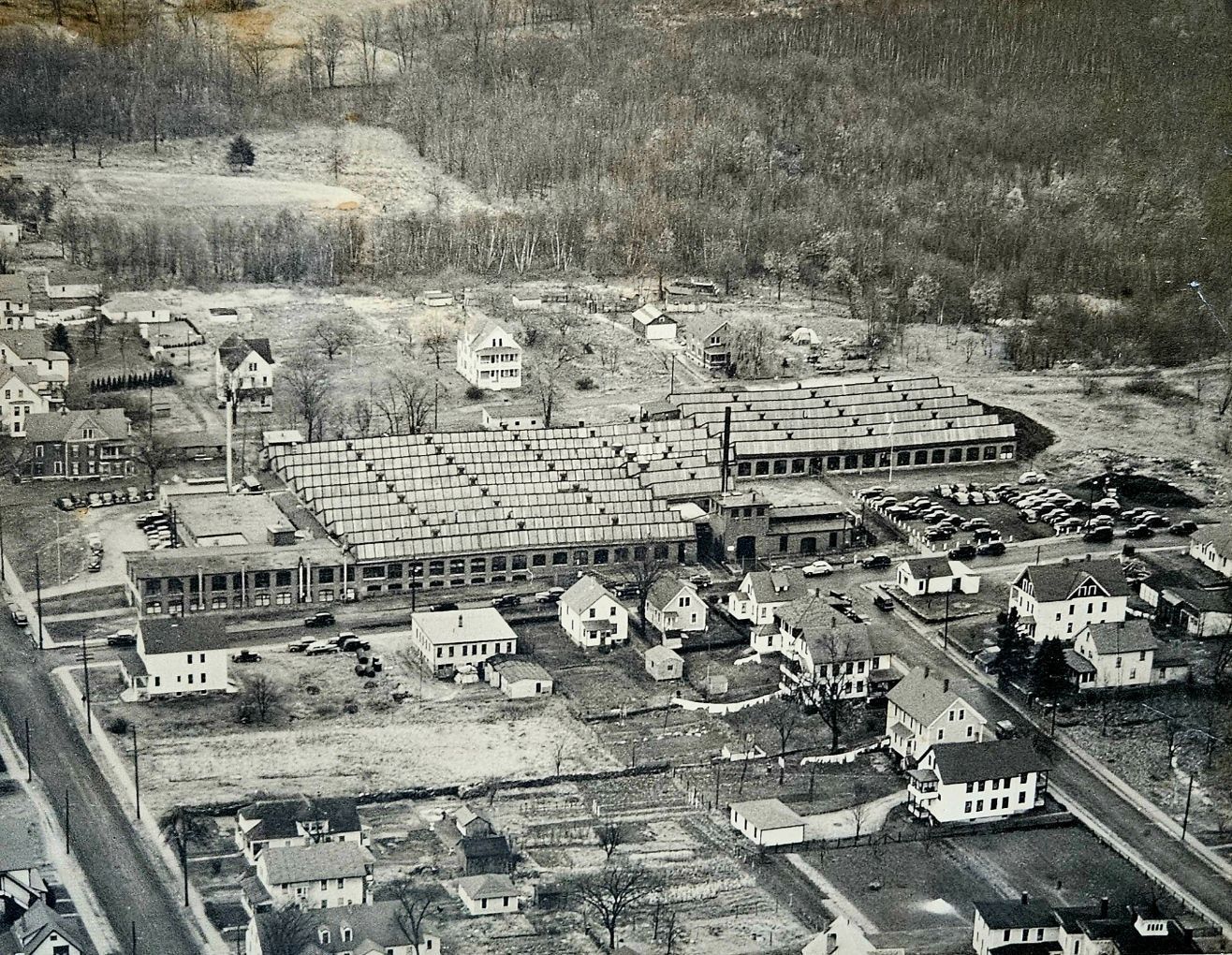Type of Photograph
Black and white print.Aspect Ratio
1.3:1Subject
Electro Motive Factory, South Park Street plant, Willimantic, CT.
Josephine Rosenstein was born in New York City in 1891. She may have first seen Willimantic in 1916, when her father served briefly as the city’s rabbi. In 1920, she entered show business in New York as Josephine Harmon, a brassy voiced comedienne, singer, and vaudeville performer. In her first job, she sang in a supper club alongside Hartford’s Sophie Tucker, whom she resembled. Sometime after that, Josephine met and married Philip Lauter, a Jewish immigrant from Romania who in 1926 had founded the Electro Motive Manufacturing Company in New York to produce miniaturized parts for that popular new product, radio. She retired from the stage in 1937 to help her husband run the company.
In 1939, the Lauters, along with their vice president, general manager, and inventor, Joseph Flanzer, moved Electro Motive to Willimantic. They explained that Willimantic provided both more extensive and less expensive space than New York or New Jersey, better working conditions for their employees, a “higher class of workers,” and lower operating costs. But there was another, additional reason: city leaders had offered the company a $5,000 incentive to relocate, an action challenged in court by local resident George Rood. In Willimantic, the Lauters acquired space in a 35,000-square-foot brick factory complex at the intersection of South and South Park streets (above, shortly after World War II; image courtesy of William Strand). William Brand and Company, which manufactured electric cables, also operated at the site, as did a button factory. By one account, Electro Motive’s initial workforce here in 1939 was 100. By another, it was 250. Most of the workforce was female; the Lauters believed that women were more dexterous than men and better able to assemble the company’s tiny products. Power came from neither water nor coal, as it did with the other mills in the city, but from electricity and “city gas.”
Electro Motive grew rapidly. It was a good time to be making condensers, capacitors, trimmers, and other miniature electrical devices. The United States was getting ready to enter World War II, and the military was poised to be a big consumer, not just for radios but also for radar. By 1944, Electro Motive had 600 employees. It had outgrown its South Park Street plant, and expanded into the old, 100,000-square-foot Windham Cotton Manufacturing Company mill on Bridge Street, which had been closed in 1926, but used as a distribution center by the U. S. Quartermaster Corps earlier in the war. Historians have long noted that World War II was a catalyst for technological progress and business growth. Willimantic’s remaining textile mills, especially the giant American Thread Company, also prospered during those years. (Image above shows Josephine Lauter Greer, center, participating in a local fundraiser c. late 1940s. Photo courtesy of Shirley Mustard. Mustard’s mother is the other woman in the photo.)
Philip Lauter died in 1945 and Josephine took over the company. Unlike the textile mills, which again declined after the war, Electro Motive continued to grow, feeding off an expanding market for electrical technology during the early Cold War years. In 1946, Electro Motive had 800 workers. Josephine modernized the cafeteria and, true to her show-business roots, added piped music throughout the plant. A new fused plug the company had developed during the war was adapted for postwar uses in vacuum cleaners, toasters, and other household appliances. Josephine remarried in 1949, to Jesse Greer, a songwriter with more than 200 tunes to his credit. Josephine coaxed him into writing a new one, “Willimantic, USA.” By 1960, the company had four plants (the two in Willimantic, plus one in South Carolina and another in Jamaica) and 2,000 employees. It was Willimantic’s second-largest employer, after American Thread. With the success of Electro Motive, and of William Brand and Company, it was easy shrug off the fact that the old textile mills were failing.
But trouble loomed. After 1965, Electro Motive, too, began to decline. The Bridge Street plant closed in 1969. Josephine died later that year, Jesse followed in 1970, and Joseph Flanzer retired in 1972. In 1973, their heirs sold the company. The new owners promptly defaulted on a promise to pay $3.5 million to the Philip Lauter Foundation, which Josephine had founded. Then, in 1975, with the company’s Willimantic workforce down to only 100 employees, they closed the South Park Street plant and moved operations to South Carolina. They cited “lack of orders,” but local people knew that the South’s low wages, anti-union culture, and lack of environmental and safety laws were the real reasons.Subject Person or Organization
Greer, Josephine Lauter, Lauter, Philip, Electro Motive Company, Cichon, JosephSubject Place
Neighborhood
Willimantic, CTCity
Windham, CTContinent
North AmericaRegion
Northeast
